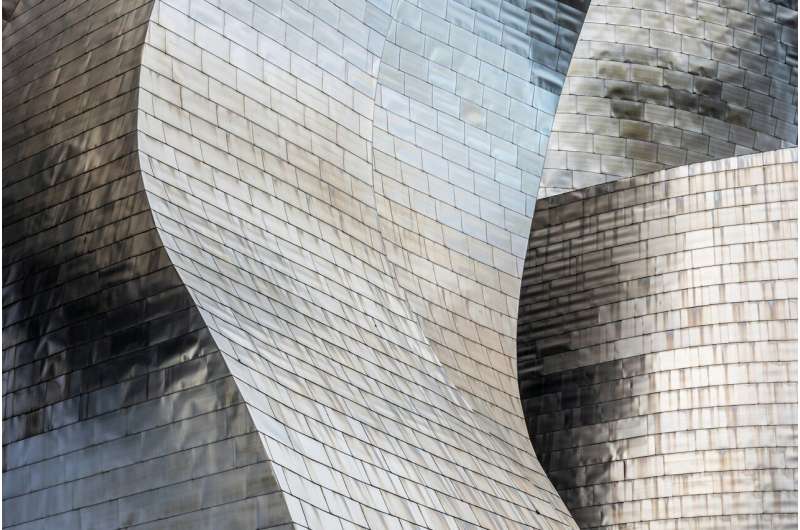
Credit: Unsplash/CC0 Public Domain
Titanium alloys are essential structural materials for a wide variety of applications, from aerospace and energy infrastructure to biomedical equipment. But as with most metals, optimizing their properties typically involves a tradeoff between two key characteristics: strength and ductility. Stronger materials tend to be less deformable, and deformable materials tend to be mechanically weak.
Now, MIT researchers, working with ATI Specialty Materials researchers, have discovered an approach to creating new titanium alloys that can overcome this historical tradeoff, leading to new alloys with exceptional combinations of strength and ductility that could lead to new applications.
The results are described in the review Advanced materialsin a paper by Shaolou Wei ScD, Professor C. Cem Tasan, postdoctoral fellow Kyung-Shik Kim and John Foltz of ATI Inc. The improvements, the team explains, come from tailoring the alloy’s chemical composition and lattice structure, while adjusting the processing techniques used to produce the material on an industrial scale.
Titanium alloys are important because of their exceptional mechanical properties, corrosion resistance and light weight compared to steels for example. This is due to careful selection of the alloying elements and their relative proportions, as well as the way the material is processed.
“You can create different structures, which creates a huge playing field for you to get good combinations of properties, both for cryogenic and high temperatures,” Tasan says.
But this wide range of possibilities in turn requires finding a way to guide selections to produce a material that meets the specific needs of a particular application. The analysis and experimental results described in the new study provide those insights.
The structure of titanium alloys, down to the atomic scale, determines their properties, Tasan explains. And in some titanium alloys, this structure is even more complex, consisting of two different intermingled phases, called alpha and beta phases.
“The key strategy in this design approach is to consider different scales,” he explains. “One is the structure of the individual crystal. For example, by carefully choosing the alloying elements, one can achieve a more ideal crystal structure of the alpha phase that allows for particular deformation mechanisms. The other scale is the polycrystalline scale, which involves interactions between the alpha and beta phases. The approach followed here therefore involves design considerations for both.”
In addition to choosing the right alloy materials and proportions, manufacturing steps proved to play an important role. The team discovered that a technique called cross-rolling is another key element in achieving an exceptional combination of strength and ductility.
Working with ATI researchers, the team tested a variety of alloys under scanning electron microscope conditions as they deformed, revealing details about how their microstructures respond to external mechanical loading. They found that a particular set of parameters (composition, proportions, and processing method) produced a structure in which the alpha and beta phases shared the strain evenly, mitigating the tendency for cracking that can occur between the phases when they react differently.
“The phases deform in harmony,” Tasan explains. This cooperative response to deformation can result in a higher quality material, they found.
“We studied the structure of the material to understand these two phases and their morphologies, and we studied their chemical composition by performing local chemical analysis at the atomic scale. We adopted a wide variety of techniques to quantify various properties of the material on multiple length scales,” says Tasan, who is a professor of materials science and engineering at POSCO and an associate professor of metallurgy.
“When we look at the overall properties” of titanium alloys produced using their system, “the properties are really much better than comparable alloys.”
This was industry-supported academic research aimed at proving the principles of designing alloys that could be produced commercially on a large scale, according to Tasan.
“What we’re doing in this collaboration is really about a fundamental understanding of crystal plasticity. We’re showing that this design strategy is validated and we’re scientifically demonstrating how it works,” he adds, noting that there’s still a lot of room for further improvement.
As for potential applications of these findings, he says, “for any aerospace application where an improved combination of strength and ductility is useful, this type of invention offers new opportunities.”
More information:
Shaolou Wei et al., Discovering Pyramid Treasures: Multi-scale Design of High-Strength and Ductility Titanium Alloys, Advanced materials (2024). DOI: 10.1002/adma.202406382
Provided by Massachusetts Institute of Technology
This article is republished with kind permission from MIT News (web.mit.edu/newsoffice/), a popular site covering the latest research, innovation, and teaching at MIT.
Quote:New design approach identifies routes to stronger titanium alloys (2024, July 2) retrieved July 3, 2024 from https://techxplore.com/news/2024-07-approach-routes-stronger-titanium-alloys.html
This document is subject to copyright. Apart from any fair dealing for the purpose of private study or research, no part may be reproduced without written permission. The content is provided for informational purposes only.